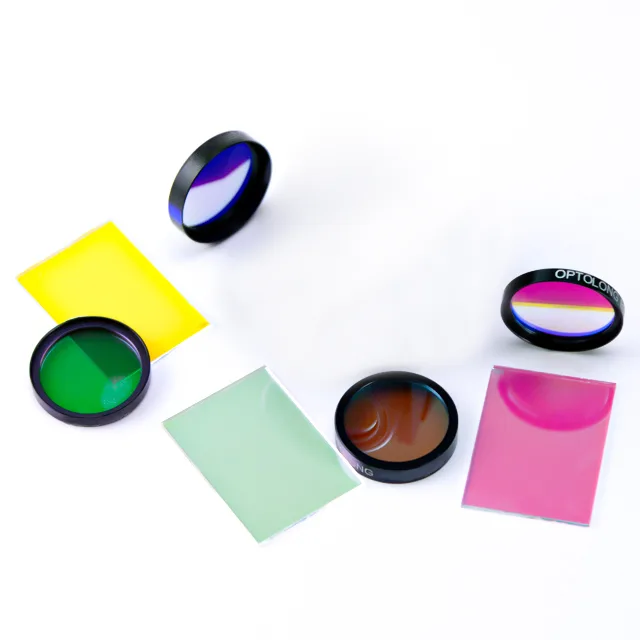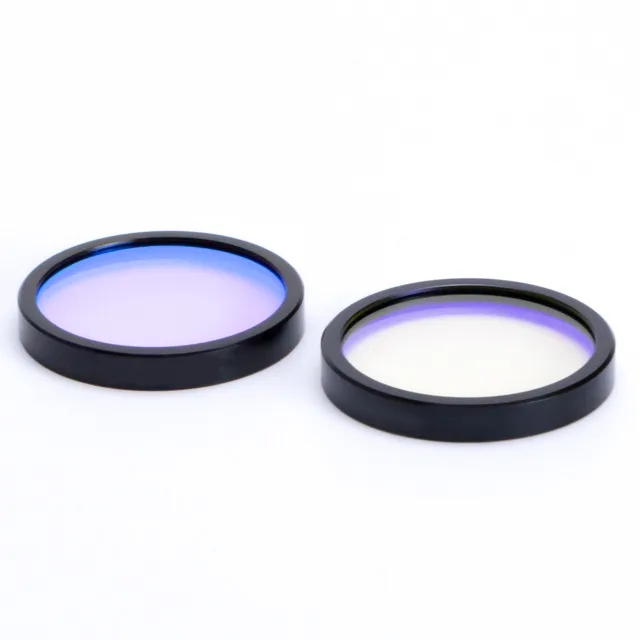Enhance the visual brilliance of your projector with a dichroic glass filter. A dichroic glass filter is perfect for impeccable color accuracy and stunning image quality. This specialized optical filter consists of multiple thin films deposited onto a glass substrate, allowing specific wavelengths of light to pass through while blocking others.
By separating and redirecting light, dichroic filters create vibrant and true-to-life colors on the screen. Whether you’re a home theater enthusiast, a professional photographer, or a lighting designer, the dichroic glass filter is a game-changer.
In this article, we will delve into the world of dichroic glass filters for projectors, exploring their benefits and how they can transform your visual experience.

What is Dichroic Glass Filter?
A dichroic glass filter is a specialized optical filter designed to transmit or reflect specific wavelengths of light while blocking others. It consists of multiple layers of thin films deposited onto a glass substrate. These films allow light to pass through or reflect based on wavelength, improving color accuracy and visual quality.
Uses of Dichroic Glass
Projectors
Dichroic glass filters are commonly used in projectors to separate light into different color components, ensuring accurate and vibrant color reproduction on the screen.
Photography: Photographers often employ dichroic filters to enhance their images’ color balance and tone, achieving more captivating and realistic results.
Lighting
In the lighting industry, dichroic glass filters control and manipulate light’s color temperature and intensity, creating stunning and immersive lighting effects.
Optics: These filters are also employed in various optical instruments and scientific applications, where precise control of light wavelengths is crucial for accurate measurements and observations.
Different Types of Dichroic Filters
- Reflective Dichroic Filters
These filters reflect specific wavelengths of light while allowing others to pass through. They are commonly used in projectors, where they separate and redirect light to create vivid and accurate colors on the screen.
- Transmissive Dichroic Filters
These filters transmit specific wavelengths of light while reflecting the rest. They find applications in photography and lighting, allowing photographers and lighting designers to control the color properties of the light passing through the filter.
- Polarizing Dichroic Filters
These filters selectively transmit light waves that vibrate in a particular plane while blocking others. They are widely used in optical devices and polarized sunglasses to reduce glare and improve visibility.
How to Clean Dichroic Filters?
Keeping your dichroic filters clean is essential for maintaining optimal performance. Here are the steps to clean them effectively:
- Power off the projector or optical device and allow it to cool down before cleaning.
- Gently remove the dichroic filter from its housing, following the manufacturer’s instructions.
- Use a soft, lint-free cloth or a lens-cleaning brush to remove any loose dust or debris from the filter’s surface.
- Dampen a clean cloth or optical cleaning tissue with a small amount of optical cleaning solution.
- Gently wipe the surface of the filter using a circular motion, taking care not to apply excessive pressure.
- If there are stubborn stains or fingerprints, lightly moisten a cotton swab with the cleaning solution and gently clean the affected area.
- Once the filter is clean, use a dry, lint-free cloth to remove any remaining moisture.
- Reinstall the dichroic filter in its housing, ensuring it is securely in place.
Where to Find Dichroic Filters?
OptolongFilter.com is the go-to retailer for amateurs and professionals when purchasing dichroic filters online. They offer a wide range of high-quality dichroic filters for projectors, photography, lighting, and various optical applications.
OptolongFilter.com provides detailed product descriptions, helpful customer reviews, and secure payment options, making finding the perfect dichroic filter for your needs easy and convenient.
Dichroic filter mounted in mounts
FAQs:
Can I clean a dichroic filter with water?
No, it is not recommended to clean dichroic filters with water alone. Optical cleaning solutions specifically designed for delicate surfaces should be used to ensure proper cleaning without damaging the filter’s coatings.
How does a dichroic glass filter improve the image quality of a projector?
A dichroic glass filter improves image quality by separating light into its color components, allowing for more accurate and vibrant color reproduction on the screen. It filters out unwanted wavelengths of light, resulting in enhanced clarity and visual brilliance.
Can I use a dichroic glass filter with any projector?
Dichroic glass filters are designed to be compatible with a wide range of projectors. However, it is essential to ensure that the filter size matches the projector’s lens thread size for proper installation and optimal performance.
Are dichroic glass filters easy to install and remove from a projector?
Yes, dichroic glass filters are typically designed to be user-friendly and easy to install. They often come with clear instructions or guidelines for proper installation. Similarly, removing the filter is straightforward, allowing for convenient maintenance or replacement.
How often should I clean my dichroic filter?
The frequency of cleaning depends on the environment and usage. However, it is generally recommended to clean the filter whenever you notice a significant decrease in image quality or if there are visible stains or fingerprints on the surface.
Final Words
Dichroic glass filters enhance visual quality and color accuracy in projectors, photography, lighting, and optical applications. By understanding the different types available, how to clean them effectively, and where to find the best filters online, you can take your visual experiences to new heights. Visit OptolongFilter.com today and unlock the full potential of your projector with a high-quality dichroic glass filter.

